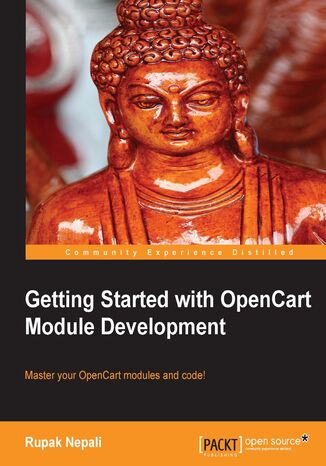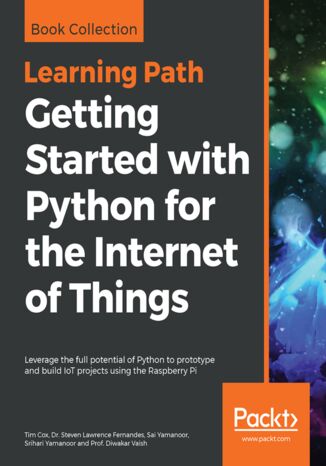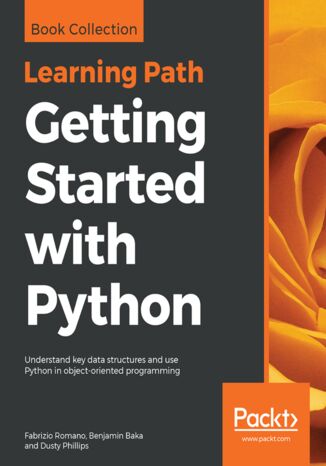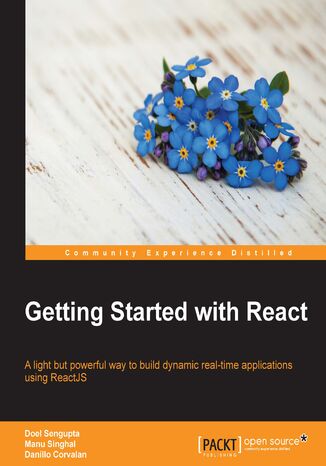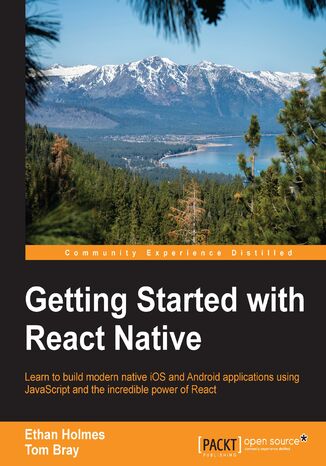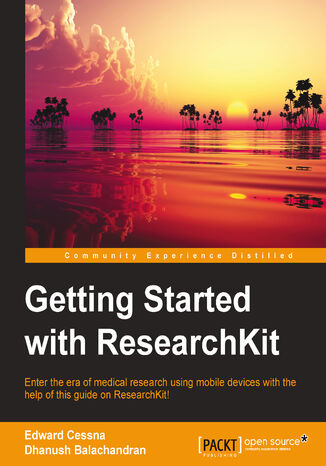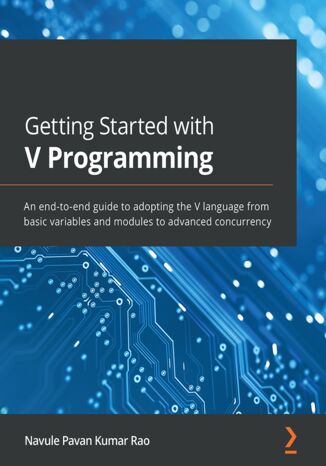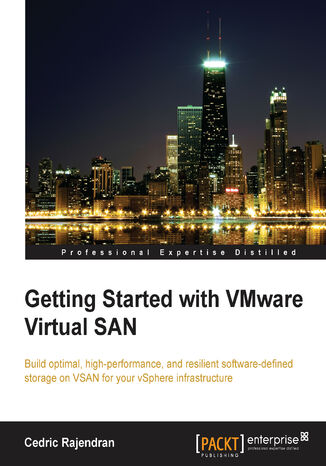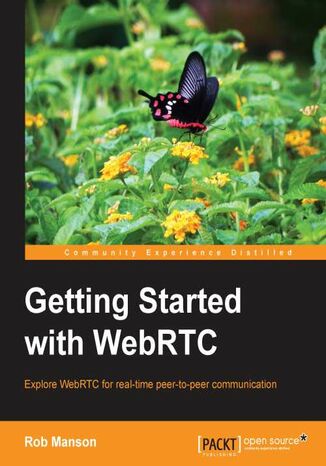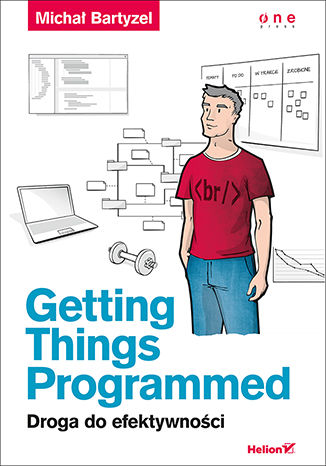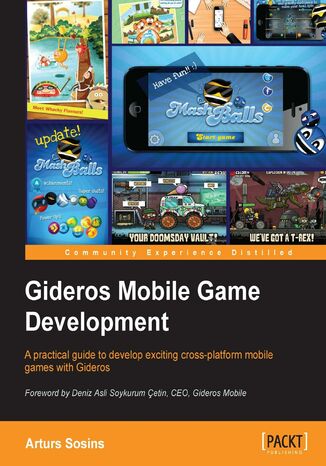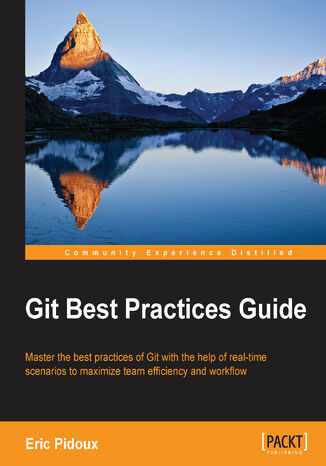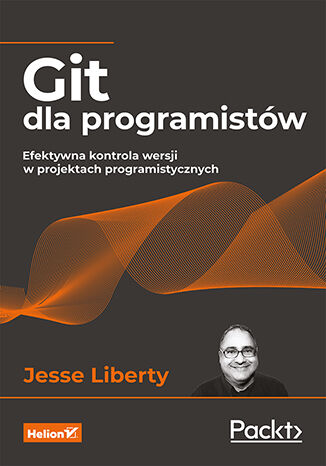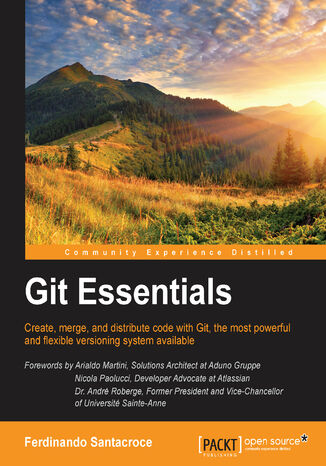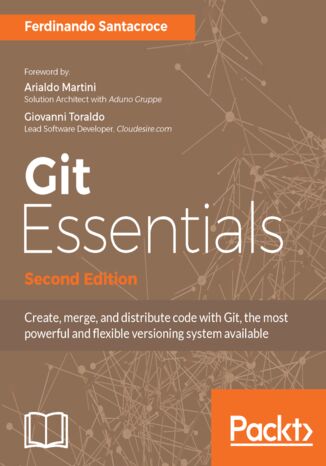Категорії
Електронні книги
-
Бізнес та економіка
- Біткойн
- Ділова жінка
- Коучинг
- Контроль
- Електронний бізнес
- Економіка
- Фінанси
- Фондова біржа та інвестиції
- Особисті компетенції
- Комп'ютер в офісі
- Комунікація та переговори
- Малий бізнес
- Маркетинг
- Мотивація
- Мультимедійне навчання
- Нерухомість
- Переконання та НЛП
- Податки
- Соціальна політика
- Порадники
- Презентації
- Лідерство
- Зв'язки з громадськістю
- Звіти, аналізи
- Секрет
- Соціальні засоби комунікації
- Продаж
- Стартап
- Ваша кар'єра
- Управління
- Управління проектами
- Людські ресурси (HR)
-
Для дітей
-
Для молоді
-
Освіта
-
Енциклопедії, словники
-
Електронна преса
- Architektura i wnętrza
- Безпека життєдіяльності
- Biznes i Ekonomia
- Будинок та сад
- Електронний бізнес
- Ekonomia i finanse
- Езотерика
- Фінанси
- Особисті фінанси
- Бізнес
- Фотографія
- Інформатика
- Відділ кадрів та оплата праці
- Для жінок
- Комп'ютери, Excel
- Бухгалтерія
- Культура та література
- Наукові та академічні
- Охорона навколишнього середовища
- Впливові
- Освіта
- Податки
- Подорожі
- Психологія
- Релігія
- Сільське господарство
- Ринок книг і преси
- Транспорт та спедиція
- Здоров'я та краса
-
Історія
-
Інформатика
- Офісні застосунки
- Бази даних
- Біоінформатика
- Бізнес ІТ
- CAD/CAM
- Digital Lifestyle
- DTP
- Електроніка
- Цифрова фотографія
- Комп'ютерна графіка
- Ігри
- Хакування
- Hardware
- IT w ekonomii
- Наукові пакети
- Шкільні підручники
- Основи комп'ютера
- Програмування
- Мобільне програмування
- Інтернет-сервери
- Комп'ютерні мережі
- Стартап
- Операційні системи
- Штучний інтелект
- Технологія для дітей
- Вебмайстерність
-
Інше
-
Іноземні мови
-
Культура та мистецтво
-
Шкільні читанки
-
Література
- Антології
- Балада
- Біографії та автобіографії
- Для дорослих
- Драми
- Журнали, щоденники, листи
- Епос, епопея
- Нарис
- Наукова фантастика та фантастика
- Фельєтони
- Художня література
- Гумор, сатира
- Інше
- Класичний
- Кримінальний роман
- Нехудожня література
- Художня література
- Mity i legendy
- Лауреати Нобелівської премії
- Новели
- Побутовий роман
- Okultyzm i magia
- Оповідання
- Спогади
- Подорожі
- Оповідна поезія
- Поезія
- Політика
- Науково-популярна
- Роман
- Історичний роман
- Проза
- Пригодницька
- Журналістика
- Роман-репортаж
- Romans i literatura obyczajowa
- Сенсація
- Трилер, жах
- Інтерв'ю та спогади
-
Природничі науки
-
Соціальні науки
-
Шкільні підручники
-
Науково-популярна та академічна
- Археологія
- Bibliotekoznawstwo
- Кінознавство / Теорія кіно
- Філологія
- Польська філологія
- Філософія
- Finanse i bankowość
- Географія
- Економіка
- Торгівля. Світова економіка
- Історія та археологія
- Історія мистецтва і архітектури
- Культурологія
- Мовознавство
- літературні студії
- Логістика
- Математика
- Ліки
- Гуманітарні науки
- Педагогіка
- Навчальні засоби
- Науково-популярна
- Інше
- Психологія
- Соціологія
- Театральні студії
- Богослов’я
- Економічні теорії та науки
- Transport i spedycja
- Фізичне виховання
- Zarządzanie i marketing
-
Порадники
-
Ігрові посібники
-
Професійні та спеціальні порадники
-
Юридична
- Безпека життєдіяльності
- Історія
- Дорожній кодекс. Водійські права
- Юридичні науки
- Охорона здоров'я
- Загальне, компендіум
- Академічні підручники
- Інше
- Закон про будівництво і житло
- Цивільне право
- Фінансове право
- Господарське право
- Господарське та комерційне право
- Кримінальний закон
- Кримінальне право. Кримінальні злочини. Кримінологія
- Міжнародне право
- Міжнародне та іноземне право
- Закон про охорону здоров'я
- Закон про освіту
- Податкове право
- Трудове право та законодавство про соціальне забезпечення
- Громадське, конституційне та адміністративне право
- Кодекс про шлюб і сім'ю
- Аграрне право
- Соціальне право, трудове право
- Законодавство Євросоюзу
- Промисловість
- Сільське господарство та захист навколишнього середовища
- Словники та енциклопедії
- Державні закупівлі
- Управління
-
Путівники та подорожі
- Африка
- Альбоми
- Південна Америка
- Центральна та Північна Америка
- Австралія, Нова Зеландія, Океанія
- Австрія
- Азії
- Балкани
- Близький Схід
- Болгарія
- Китай
- Хорватія
- Чеська Республіка
- Данія
- Єгипет
- Естонія
- Європа
- Франція
- Гори
- Греція
- Іспанія
- Нідерланди
- Ісландія
- Литва
- Латвія
- Mapy, Plany miast, Atlasy
- Мініпутівники
- Німеччина
- Норвегія
- Активні подорожі
- Польща
- Португалія
- Інше
- Przewodniki po hotelach i restauracjach
- Росія
- Румунія
- Словаччина
- Словенія
- Швейцарія
- Швеція
- Світ
- Туреччина
- Україна
- Угорщина
- Велика Британія
- Італія
-
Психологія
- Філософія життя
- Kompetencje psychospołeczne
- Міжособистісне спілкування
- Mindfulness
- Загальне
- Переконання та НЛП
- Академічна психологія
- Психологія душі та розуму
- Психологія праці
- Relacje i związki
- Батьківство та дитяча психологія
- Вирішення проблем
- Інтелектуальний розвиток
- Секрет
- Сексуальність
- Спокушання
- Зовнішній вигляд та імідж
- Філософія життя
-
Релігія
-
Спорт, фітнес, дієти
-
Техніка і механіка
Аудіокниги
-
Бізнес та економіка
- Біткойн
- Ділова жінка
- Коучинг
- Контроль
- Електронний бізнес
- Економіка
- Фінанси
- Фондова біржа та інвестиції
- Особисті компетенції
- Комунікація та переговори
- Малий бізнес
- Маркетинг
- Мотивація
- Нерухомість
- Переконання та НЛП
- Податки
- Соціальна політика
- Порадники
- Презентації
- Лідерство
- Зв'язки з громадськістю
- Секрет
- Соціальні засоби комунікації
- Продаж
- Стартап
- Ваша кар'єра
- Управління
- Управління проектами
- Людські ресурси (HR)
-
Для дітей
-
Для молоді
-
Освіта
-
Енциклопедії, словники
-
Електронна преса
-
Історія
-
Інформатика
-
Інше
-
Іноземні мови
-
Культура та мистецтво
-
Шкільні читанки
-
Література
- Антології
- Балада
- Біографії та автобіографії
- Для дорослих
- Драми
- Журнали, щоденники, листи
- Епос, епопея
- Нарис
- Наукова фантастика та фантастика
- Фельєтони
- Художня література
- Гумор, сатира
- Інше
- Класичний
- Кримінальний роман
- Нехудожня література
- Художня література
- Mity i legendy
- Лауреати Нобелівської премії
- Новели
- Побутовий роман
- Okultyzm i magia
- Оповідання
- Спогади
- Подорожі
- Поезія
- Політика
- Науково-популярна
- Роман
- Історичний роман
- Проза
- Пригодницька
- Журналістика
- Роман-репортаж
- Romans i literatura obyczajowa
- Сенсація
- Трилер, жах
- Інтерв'ю та спогади
-
Природничі науки
-
Соціальні науки
-
Науково-популярна та академічна
-
Порадники
-
Професійні та спеціальні порадники
-
Юридична
-
Путівники та подорожі
-
Психологія
- Філософія життя
- Міжособистісне спілкування
- Mindfulness
- Загальне
- Переконання та НЛП
- Академічна психологія
- Психологія душі та розуму
- Психологія праці
- Relacje i związki
- Батьківство та дитяча психологія
- Вирішення проблем
- Інтелектуальний розвиток
- Секрет
- Сексуальність
- Спокушання
- Зовнішній вигляд та імідж
- Філософія життя
-
Релігія
-
Спорт, фітнес, дієти
-
Техніка і механіка
Відеокурси
-
Бази даних
-
Big Data
-
Biznes, ekonomia i marketing
-
Кібербезпека
-
Data Science
-
DevOps
-
Для дітей
-
Електроніка
-
Графіка / Відео / CAX
-
Ігри
-
Microsoft Office
-
Інструменти розробки
-
Програмування
-
Особистісний розвиток
-
Комп'ютерні мережі
-
Операційні системи
-
Тестування програмного забезпечення
-
Мобільні пристрої
-
UX/UI
-
Веброзробка, Web development
-
Управління
Подкасти
- Електронні книги
- Інформатика
- Програмування
Програмування
Nasza biblioteka online zawiera szereg publikacji, dzięki którym programowanie nie będzie mieć przed Tobą żadnych tajemnic. Zawarte tu książki przybliżą Ci takie języki jak HTML, JavaScript, Python czy CSS. Dowiesz się dzięki nim także tego, jak tworzyć efektywne algorytmy, projektować aplikacje mobilne, czy dbać o poprawną architekturę informacji w serwisach internetowych.
Modules, are a group of php and xml files meant to extend the system with new functionality, or override core system behavior. Most of the base Magento system is built using the module system, so you can see why they are an important feature for this rich open-source e-commerce solutions. This book explores key module development techniques and teaches you to modify, understand and structure your modules making it easy for you to get a strong foundation for clean and unobtrusive Magento module development.Getting Started with Magento Extension Development is a practical, hands-on guide to building Magento modules from scratch. This book provides an in depth introduction and helps you discover features such as; blocks, controllers, models, configuration files, and other crucial elements which contribute to the Magento architecture. This book introduces the you to real-world modules and helps provide a strong foundation which you need to become a professional Magento module developer. The book further explores best practices and tips and tricks offering you the ultimate go to guide.Getting Started with Magento Extension Development focuses on three areas. First you are guided through the entire Magento structure, where each important directory or file is explored in detail. Then the essence of the module structure and development is explained through the detailed coverage of models, blocks, controllers, configuration, and other files that manifest a single module. Finally, a detailed set of instructions is given for building four real-world modules, including a payment and shipping module.
Getting Started with OpenCart Module Development. Master your OpenCart modules and code!
OpenCart is an online shopping tool which is free to use. It has become widely popular because of its support for custom extensions and module development. This book helps you understand how to use the features available in OpenCart using step-by-step instructions.Getting Started with OpenCart Module Development gives you step-by-step explanations and illustrations on how to clone, customize, and develop modules and pages with OpenCart.This book shows you how to create custom OpenCart modules and pages which are needed as per the requirements of the clients to manage custom data. It describes each and every code used to make a Hello World module, a feedback module, a tips module, an order total module, and a shipping and payment module.The book covers installing, configuring, and uninstalling modules as well as how to clone them. It also discusses all the available Global Library methods of OpenCart as well as ways to handle the files and folders of a shipping and payment module. At the end of the book, you will learn how to make custom pages to manage data by creating a feedback module and how to create the order total using a tips module.In Getting Started with OpenCart Module Development, you will learn everything you need to know to create custom OpenCart modules.
PhantomJS is a headless WebKit browser with JavaScript API that allows you to create new ways to automate web testing. PhantomJS is currently being used by a large number of users to help them integrate headless web testing into their development processes. It also gives you developers a new framework to create web-based applications, from simple web manipulation to performance measurement and monitoring.A step step-by by-step guide that will help you develop new tools for solving web and testing problems in an effective and quick way. The book will teach you how to use and maximize PhantomJS to develop new tools for web scrapping, web performance measurement and monitoring, and headless web testing. This book will help you understand PhantomJS’ scripting API capabilities and strengths.This book starts by looking at PhantomJS’ JavaScript API, features, and basic execution of scripts. Throughout the book, you will learn details to help you write scripts to manipulate web documents and fully create a web scrapping tool.Through its practical approach, this book strives to teach you by example, where each chapter focuses on the common and practical usage of PhantomJS, and how to extract meaningful information from the web and other services.By the end of the book, you will have acquired the skills to enable you to use PhantomJS for web testing, as well as learning the basics of Jasmine, and how it can be used with PhantomJS.
Tim Cox, Steven Lawrence Fernandes, Sai Yamanoor, Srihari Yamanoor, ...
This Learning Path takes you on a journey in the world of robotics and teaches you all that you can achieve with Raspberry Pi and Python.It teaches you to harness the power of Python with the Raspberry Pi 3 and the Raspberry Pi zero to build superlative automation systems that can transform your business. You will learn to create text classifiers, predict sentiment in words, and develop applications with the Tkinter library. Things will get more interesting when you build a human face detection and recognition system and a home automation system in Python, where different appliances are controlled using the Raspberry Pi. With such diverse robotics projects, you'll grasp the basics of robotics and its functions, and understand the integration of robotics with the IoT environment.By the end of this Learning Path, you will have covered everything from configuring a robotic controller, to creating a self-driven robotic vehicle using Python.• Raspberry Pi 3 Cookbook for Python Programmers - Third Edition by Tim Cox, Dr. Steven Lawrence Fernandes• Python Programming with Raspberry Pi by Sai Yamanoor, Srihari Yamanoor• Python Robotics Projects by Prof. Diwakar Vaish
Fabrizio Romano, Benjamin Baka, Dusty Phillips
This Learning Path helps you get comfortable with the world of Python. It starts with a thorough and practical introduction to Python. You’ll quickly start writing programs, building websites, and working with data by harnessing Python's renowned data science libraries. With the power of linked lists, binary searches, and sorting algorithms, you'll easily create complex data structures, such as graphs, stacks, and queues. After understanding cooperative inheritance, you'll expertly raise, handle, and manipulate exceptions. You will effortlessly integrate the object-oriented and not-so-object-oriented aspects of Python, and create maintainable applications using higher level design patterns. Once you’ve covered core topics, you’ll understand the joy of unit testing and just how easy it is to create unit tests.By the end of this Learning Path, you will have built components that are easy to understand, debug, and can be used across different applications.This Learning Path includes content from the following Packt products:• Learn Python Programming - Second Edition by Fabrizio Romano• Python Data Structures and Algorithms by Benjamin Baka• Python 3 Object-Oriented Programming by Dusty Phillips
Qt is a cross-platform application framework and widget toolkit that is used to create GUI applications that can run on different hardware and operating systems. The main aim of this book is to introduce Qt to the reader. Through the use of simple examples, we will walk you through building blocks without focusing too much on theory.Qt is a popular tool that can be used for building a variety of applications, such as web browsers, media players such as VLC, and Adobe Photoshop. Following Qt installation and setup, the book dives straight into helping you create your first application.You will be introduced to Widgets, Qt's interface building block, and the many varieties that are available for creating GUIs. Next, Qt's core concept of signals and slots are well illustrated with sufficient examples. The book further teaches you how to create custom widgets, signals and slots, and how to communicate useful information via dialog boxes. To cap everything off, you will be taken through writing applications that can connect to databases in order to persist data.By the end of the book, you should be well equipped to start creating your own Qt applications and confident enough to pick up more advanced Qt techniques and materials to hone your skills.
Doel Sengupta, Manu Singhal, Danillo Corvalan
ReactJS, popularly known as the V (view) of the MVC architecture, was developed by the Facebook and Instagram developers. It follows a unidirectional data flow, virtual DOM, and DOM difference that are generously leveraged in order to increase the performance of the UI. Getting Started with React will help you implement the Reactive paradigm to build stateless and asynchronous apps with React. We will begin with an overview of ReactJS and its evolution over the years, followed by building a simple React component. We will then build the same react component with JSX syntax to demystify its usage. You will see how to configure the Facebook Graph API, get your likes list, and render it using React. Following this, we will break the UI into components and you’ll learn how to establish communication between them and respond to users input/events in order to have the UI reflect their state. You’ll also get to grips with the ES6 syntaxes. Moving ahead, we will delve into the FLUX and its architecture, which is used to build client-side web applications and complements React’s composable view components by utilizing a unidirectional data flow. Towards the end, you’ll find out how to make your components reusable, and test and deploy them into a production environment. Finally, we’ll briefly touch on other topics such as React on the server side, Redux and some advanced concepts.
React Native is a game-changing approach to hybrid mobile development. Web developers can leverage their existing skills to write mobile applications in JavaScript that are truly native without using cross-compilation or web views. These applications have all of the advantages of those written in Objective-C or Java, combined with the rapid development cycle that JavaScript developers are accustomed to.Web developers who want to develop native mobile applications face a high barrier to entry, because they are forced to learn platform-specific languages and frameworks. Numerous hybrid technologies have tried to simplify this process, but have failed to achieve the performance and appearance that users expect.This book will show you all the advantages of true native development that React Native has without the steep learning curve, leveraging the knowledge you already have. We do this by getting you up and running quickly with a sample application. Next, we’ll introduce you to the fundamentals of creating components and explain how React Native works under the hood. Once you have established a solid foundation, you will dive headfirst into developing a real-world application from start to finish. Along the way, we will demonstrate how to create multiple screens and navigate between them,use layout and style native UI components, and access native APIs such as local storage and geolocation. Finally, we tackle the advanced topic of Native modules, which demonstrates that there are truly no limits to what you can do with React Native.
Dhanush Balachandran, Edward Cessna
ResearchKit is an open source software development framework from Apple that lets you easily create mobile applications for clinical research studies. ResearchKit provides you the ability to orchestrate the administration of tasks and recording of the results. ResearchKit provides tasks in order to perform informed consent, active tasks, and surveys.Starting with the basics of the ResearchKit framework, this books walks you through the steps of creating iOS applications that could serve as the basis of a clinical research mobile app.This book will introduce readers to ResearchKit and how to turn your iPhone into into a clinical research tool. The book will start off by installing and building the research framework in line with the researcher's needs; during this, the reader will learn to embed ResearchKit in the application and create a small task.After this, the book will go a little deeper into creating modules for surveys, consents, and so on. The book will also cover the various aspects of privacy and security with regard to participant data, and how to build dashboards for visualizing medical data and results in line with the researcher's requirements: data backends, JSON serialization and deserialization, and so on.Readers will be able to fully utilize ResearchKit for medical research, will be able to get more and more patients to participate in their surveys, and will gain insights from the surveys using the dashboards created.
Over 2 million IT pros have installed Spiceworks. It helps them with their daily tasks, streamlines processes, and even saves them money, all for free! Getting Started with Spiceworks is an ideal resource to install Spiceworks and run it on your network. After all, over 2 million IT pros can't be wrong, so learn how to join the Spiceworks IT revolution.Getting Started with Spiceworks starts from downloading the app to having a fully functional Spiceworks installation in just a few minutes. It will cover Network Inventory, Help Desk, Self-Service User Portal, knowledge bases, and more in detail for you to get the most out of Spiceworks.Whether you have a decade of experience or you are new to the IT field, Spiceworks has tools for every IT pro's needs. You will learn how to make your daily tasks easier, streamline existing processes, and even save money with Spiceworks.Getting Started with Spiceworks will walk you through the Spiceworks installation step-by-step. It will cover topics such as configuring Spiceworks to scan your network and organize information, setting up Help Desk and Self-Service User Portal, running reports that dazzle and streamline your purchasing process, and connecting with other IT pros around your area or around the world thoroughly.Getting Started with Spiceworks will provide insights and tips from experts on Spiceworks. It is an ideal guide to progress quickly from installation to Spiceworks being an essential part of your IT day.
Streamlit shortens the development time for the creation of data-focused web applications, allowing data scientists to create web app prototypes using Python in hours instead of days. Getting Started with Streamlit for Data Science takes a hands-on approach to helping you learn the tips and tricks that will have you up and running with Streamlit in no time.You'll start with the fundamentals of Streamlit by creating a basic app and gradually build on the foundation by producing high-quality graphics with data visualization and testing machine learning models. As you advance through the chapters, you’ll walk through practical examples of both personal data projects and work-related data-focused web applications, and get to grips with more challenging topics such as using Streamlit Components, beautifying your apps, and quick deployment of your new apps.By the end of this book, you’ll be able to create dynamic web apps in Streamlit quickly and effortlessly using the power of Python.
Getting Started with Terraform. Infrastructure automation made easy
Terraform is a tool used to efficiently build, configure, and improve production infrastructure. It can manage existing infrastructure as well as create custom in-house solutions. This book shows you when and how to implement infrastructure as a code practices with Terraform. It covers everything necessary to set up complete management of infrastructure with Terraform, starting with the basics of using providers and resources. This book is a comprehensive guide that begins with very small infrastructure templates and takes you all the way to managing complex systems, all using concrete examples that evolve over the course of the book. It finishes with the complete workflow of managing a production infrastructure as code – this is achieved with the help of version control and continuous integration. At the end of this book, you will be familiar with advanced techniques such as multi-provider support and multiple remote modules.
Want to get started in the world of 2D game development with Unity? This book will take your hand and guide you through this amazing journey to let you know exactly what you need to build the games you want to build, without sacrificing quality. You will build a solid understanding of Unity 5.x, by focusing with the embedded tools to develop 2D games. In learning about these, along with accurate explanations and practical examples, you will design, develop, learn how to market and publish a delectable Tower Defense game about cupcakes versus pandas.Each chapter in this book is structured to give you a full understanding on a specific aspect of the workflow pipeline. Each of these aspects are essential for developing games in Unity. In a step-by-step approach, you will learn about each of the following phases: Game Design, Asset Importing, Scripting, User Interfaces, Animations, Physics, Artificial Intelligence, Gameplay Programming, Polishing and Improving, Marketing, Publishing and much more.This book provides you with exercises and homework at the end of each chapter so that you can level up your skills as a Unity game developer. In addition, each of these parts are centered on a common point of discussion with other learners just like you. Therefore, by sharing your ideas with other people you will not only develop your skills but you will also build a network.
A new language on the block, V comes with a promising set of features such as fast compilation and interoperability with other programming languages. This is the first book on the V programming language, packed with concise information and a walkthrough of all the features you need to know to get started with the language.The book begins by covering the fundamentals to help you learn about the basic features of V and the suite of built-in libraries available within the V ecosystem. You'll become familiar with primitive data types, declaring variables, arrays, and maps. In addition to basic programming, you'll develop a solid understanding of the building blocks of programming, including functions, structs, and modules in the V programming language.As you advance through the chapters, you'll learn how to implement concurrency in V Programming, and finally learn how to write test cases for functions. This book takes you through an end-to-end project that will guide you to build fast and maintainable RESTful microservices by leveraging the power of V and its built-in libraries.By the end of this V programming book, you'll be well-versed with the V programming language and be able to start writing your own programs and applications.
WebRTC delivers web-based real-time communication and is set to revolutionize our view of what the Web really is. Streaming audio and video from browser to browser, as well as opening raw access to the camera and microphone, is already creating a whole new dynamic web. WebRTC also introduces real-time data channels that will allow interaction with dynamic data feeds from sensors and other devices. This really is a great time to be a web developer!Getting Started with WebRTC provides all of the practical information you need to quickly understand what WebRTC is, how it works, and how you can add it to your own web applications. It includes clear working examples designed to help you get started building your own WebRTC-enabled applications right away.Getting Started with WebRTC will guide you through the process of creating your own WebRTC application that can be applied in a number of different real-world situations, using well documented and clearly explained code examples.You will learn how to quickly and easily create a practical peer-to-peer video chat application, an audio only call option, and how a Web-Socket-based signaling server can also be used to enable real-time text-based chat. You will also be shown how this same server and application structure can easily be extended to include simple drag-and-drop file sharing with transfer updates and thumbnail previews.
Getting Things Programmed. Droga do efektywności
Na pracę programisty składa się bardzo wiele zadań. Nawet jeżeli 90% czasu spędzamy na "klepaniu w klawiaturę", to w trakcie tych działań wykonujemy całą gamę najróżniejszych czynności. Sprawne sterowanie swoją uwagą, planowanie zadań czy umiejętność ich oszacowania to wiedza, której brakuje większości programistów. Często nie zdajemy sobie nawet sprawy z istnienia problemów spowalniających naszą pracę. W niniejszej książce Autor przedstawia bogaty wachlarz wyzwań stojących przed świadomym programistą. Nie poprzestaje na tym: wysuwa propozycje samodoskonalenia. Opisuje sprawdzone recepty pomagające zrozumieć codzienne problemy, rozbija je na czynniki pierwsze i przygotowuje do walki o lepszą organizację czasu. Maciej Aniserowicz, Programista i szkoleniowiec, twórca bloga devstyle.pl oraz podcasta devtalk.pl
Have you ever had an interesting idea for a mobile game? Have you ever wanted to jump on the mobile app bandwagon? Developing a mobile game has never been so fun and easy, and with the vast amount of smartphone users, it may also become a profitable thing to do. Gideros is a Lua-based framework that facilitates effortless native iOS and Android application development along with hardware acceleration. Gideros also comes with a built-in box2D physics engine and extended memory management features to make mobile game development a breeze.Gideros Mobile Game Development shows you how to develop an original and exciting game in Gideros, helping you create your very first project and guiding you through the configuration of settings and assets to help you target devices with different resolutions.This book teaches you everything you need to know about Gideros, from installing Gideros on your operating system to creating and efficiently managing your Gideros projects and creating your very first game, all with the help of well explained examples.You will learn how to quickly create game prototypes in Gideros, how to test and set up projects to automatically target devices with different resolutions, and how to polish your prototype with animations, sounds, tweens, and even physics to create your very first cross-platform game.By the end of this book, you will have learned everything you need to create visually stunning physics and exciting cross-platform games using Gideros.
Git dla programistów. Efektywna kontrola wersji w projektach programistycznych
Kontrola wersji jest warunkiem sukcesu w każdym projekcie programistycznym. Im większy zespół i im bardziej złożony projekt, tym ważniejsze jest skuteczne zarządzanie wersjami. Do tych celów najczęściej używa się Gita. To popularne i dynamicznie rozwijane darmowe oprogramowanie. Zawiera wiele przydatnych narzędzi, pozwala też na wyrafinowaną konfigurację i dostosowanie do szczególnych potrzeb. Jeśli chcesz w pełni skorzystać z jego potencjału, musisz nabrać wprawy, pewności siebie i dobrze poznać poszczególne elementy Gita. Oto opracowany z myślą o programistach praktyczny przewodnik, dzięki któremu szybko zaczniesz się posługiwać Gitem. Zawiera wszystkie informacje niezbędne do dogłębnego zrozumienia specyfiki tego narzędzia. Dowiesz się, w jaki sposób je zainstalować i skonfigurować, nauczysz się tworzyć i klonować repozytoria, a także zapoznasz się z narzędziami GUI Gita i zrozumiesz zasady pracy z gałęziami. Poznasz techniki rozwiązywania konfliktów scalania i korzystania z historii zmian. W książce omówiono polecenia potrzebne do zarządzania repozytorium, wyjaśniono też kwestie dotyczące bisekcji, polecenia blame i wielu innych narzędzi ułatwiających naprawianie błędów i rozwiązywanie typowych problemów. Dzięki książce dowiesz się, jak: zacząć pracę z Gitem tworzyć repozytoria lokalne i zdalne używać gałęzi, zarządzać nimi i scalać je do gałęzi głównej rozwiązywać konflikty scalania mieć pełną kontrolę nad wszystkimi informacjami w repozytorium naprawiać błędy w Gicie Kluczowym elementem każdego projektu programistycznego jest kontrola wersji!
Since its inception, Git has attracted skilled developers due to its robust, powerful, and reliable features. Its incredibly fast branching ability transformed a piece of code from a niche tool for Linux Kernel developers into a mainstream distributed versioning system. Like most powerful tools, Git can be hard to approach since it has a lot of commands, subcommands, and options that easily confuse newcomers.The 2nd edition of this very successful book will help you overcome this fear and become adept in all the basic tasks in Git. Building upon the success of the first book, we start with a brief step-by-step installation guide; after this, you'll delve into the essentials of Git. For those of you who have bought the first edition, this time we go into internals in far greater depth, talking less about theory and using much more practical examples.The book serves as a primer for topics to follow, such as branching and merging, creating and managing a GitHub personal repository, and fork and pull requests. You’ll then learn the art of cherry-picking, taking only the commits you want, followed by Git blame. Finally, we'll see how to interoperate with a Subversion server, covering the concepts and commands needed to convert an SVN repository into a Git repository.To conclude, this is a collection of resources, links, and appendices to satisfy even the most curious.



